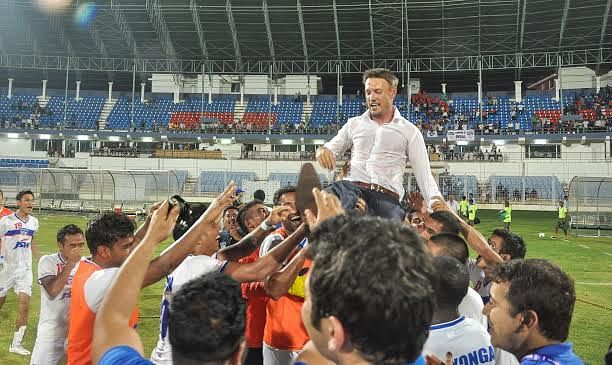
I-League: Immaculate Bengaluru FC complete fairytale
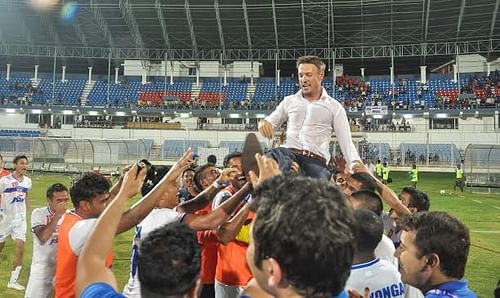
Bengaluru FC squad celebrate after clinching the I-League title
Photo Credit: Bengaluru FC
When the AIFF proposed the idea of accepting bids from corporate groups to enter two new direct-entry clubs in the I-League, the hope was to bring new life to the league that had become a fading product. JSW Group and Dodsal Group won the franchise rights but while the latter eventually backed out eventually, JSW went on to form Bengaluru FC on July 20 2013.
Almost nine months later, Bengaluru FC have not only exceeded expectations of setting high professional standards off the pitch but have also gone on to outperform every other club and clinch the I-League title on their debut season with a game to spare.
With the club starting from scratch, the majority of the team comprised of young and inexperienced Indian players as the well-known ones were already signed with other clubs or IMG-Reliance. But the club management made up for it by signing quality experienced foreigners. However the big coup was the addition of India captain Sunil Chhetri, which instantly gave the club fans due to the star striker’s immense popularity.
Suddenly the team had a good balance of youth and experience, foreign and local talent but it still needed a quality coach to bring out the best from the players. Former Manchester United youth player Ashley Westwood, who had considerable coaching experience of working in the lower leagues of England, was hired and the 37-year-old went on to become the youngest coach to win the I-League.
Being newcomers they were not expected to challenge for the title and were already immune from relegation but the club didn’t take anything for granted and gave importance to every minute detail like the players’ diet and even found ways to build a fanbase.
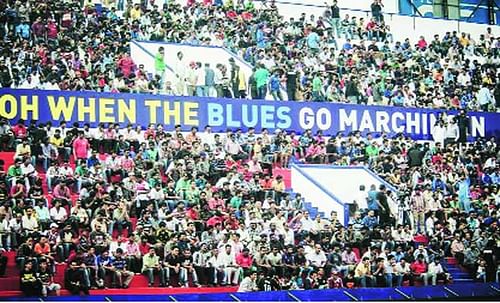
Right from the first home game against Mohun Bagan to the last against Pune FC, the Bangalore Football Stadium witnessed a sea of blue and red. It had become a fortress with the average attendance rising from 7000 to 8000, a number even East Bengal and Mohun Bagan don’t always enjoy in their home games, as the season progressed. Much like the venues of the English Premier League, fans built up a habit of singing together and creating catchy chants to both motivate their own players and intimidate opponents.
Bangalore had always been a football-crazy city but lacked a football club with HAL understandably not attracting too many fans in the past. Bengaluru deserve credit for their marketing to attract locals and the heavy use of social media platforms to engage the younger fans. Even other sportspersons like Rohan Bopanna and Ashwini Ponnappa have become the club’s followers. Finally the garden city had a club of their own with the love and respect being mutual between the club and the supporters throughout the season. The ‘Thank You’ banner from the whole squad after the final home game was an excellent gesture and previously unseen in Indian football.
Going back to the results on the pitch, there was an argument that Bengaluru only enjoyed a good start because of a favourable fixture schedule where they had their first five games on home soil. In truth a the fixture list of a domestic league season always balances out eventually and after initially struggling, Bengaluru started producing results on their travels as well with three straight wins between November and December. Even the title was clinched following back-to-back away victories over Mohun Bagan and Dempo.
What was even more commendable was the fact that the club also organised travel for their fans to attend some of the away matches. It was something that clubs which have been around for decades in Indian football never did. Even Bengaluru’s title clinching game against Dempo was witnessed by 500 fans in Goa. Bengaluru’s initiative even inspired two-time champions Salgaocar do to the same for their away game against Pune FC.
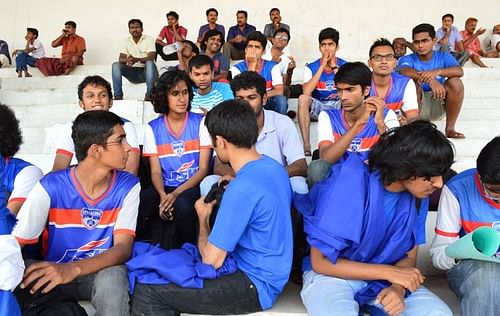
Bengaluru FC fans made a trip to Manjeri in Kerala to support their club in the Federation Cup
It wasn’t all rosy of course as they failed to make it past the group stage of the Federation Cup where once again they enjoyed great support with a group of fans making the trip to Manjeri in Kerala. Also the losses in Shillong seemed to derail their title charge. Coach Westwood consistently played down their chances of winning the league trophy when asked publicly. But internally the players, coaching staff and management believed they could do it, something which Westwood admitted after being crowned champions.
They were eager not to relinquish top spot after leading the table for so long and that determination was evident in the wins over Mohun Bagan and Dempo as they produced quality performances despite being under pressure due to the enhanced expectations of their growing fanbase.
Bengaluru truly are the deserving champions for being the most consistent side and they achieved it by also playing an excellent brand of football. That was possible only because of the meticulous preparations with many players realising their true potential like Thoi Singh and Beikhokhei Beingaichho while some like Rino Anto and Robin Singh revitalised their careers.
Predictably Sunil (14) and Australian striker Sean Rooney (10) shared the majority of the goal scoring but both evolved as players too because the two often operated in wider roles which demanded greater work ethic and fitness. The other three foreigners – defenders Curtis Osano and John Johnson and midfielder John Menyongar – were the unsung heroes at times while midfielder Siam Hanghal turned out to be one of the finds of the season.
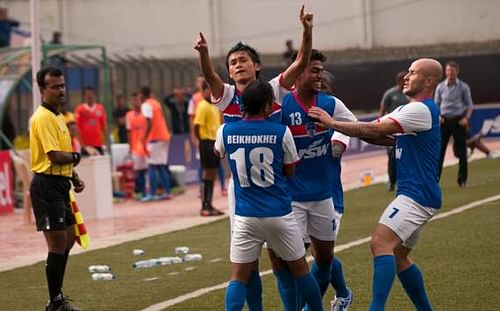
The players repaid the club management in the best possible way
Photo Credit: Bengaluru FC
The hard work was not only done on the technical side as a professional environment was established behind the scenes also like for example eight to nine officials would accompany the squad for every away game too so that the players are taken care of on the travels as well. The club provided the best facilities and the players repaid by being the best on the pitch.
Bengaluru’s debut title success is not only a triumph of professionalism but also of hard work, unity and passion with all those attributes exhibited by everyone starting from the technical staff to the club officials and the fans of course. Bengaluru were truly immaculate in completing their fairytale.